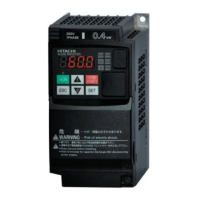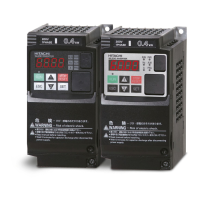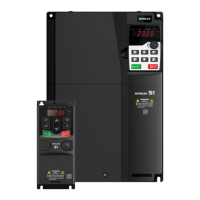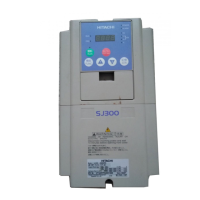Chapter 9 Inverter Functions
9-13-1
9.13
Outputting Signals According to the Output Frequency
9.13.1 Outputting a Signal When the Output Frequency Reaches the Target
How to detect and tell the system that the output frequency to the motor has accelerated to the
command frequency?
Assigning "Constant-frequency reached [FA1] (01)" to one of the output terminal functions
([C021]/[C022]/[C026]) enables the inverter to output command frequency arrival signal.
When the output frequency reaches the frequency command ([F001], [A020], [A220], [A021] to
[A035]), [FA1] is output.
If the frequency command is an analog input, [FA1] may not be output stably. In this case, the
on/off delay function of the output terminals may improve the situation. For details, refer to
"9.16.2 Delaying and Holding Output Signals".
Constant-frequency reached [FA1]:
This signal turns on when the output
frequency reaches the command frequency.
fon: 1% of the maximum frequency
foff: 2% of the maximum frequency
(Example of operation)
When the maximum frequency is 60 Hz,
and the frequency command is 50 Hz
- fon = 60 × 0.01 = 0.6 Hz
- foff = 60 × 0.02 = 1.2 Hz
- During acceleration:
On at 50 - 0.6 = 49.4 Hz
- During deceleration:
Off at 50 - 1.2 = 48.8 Hz

